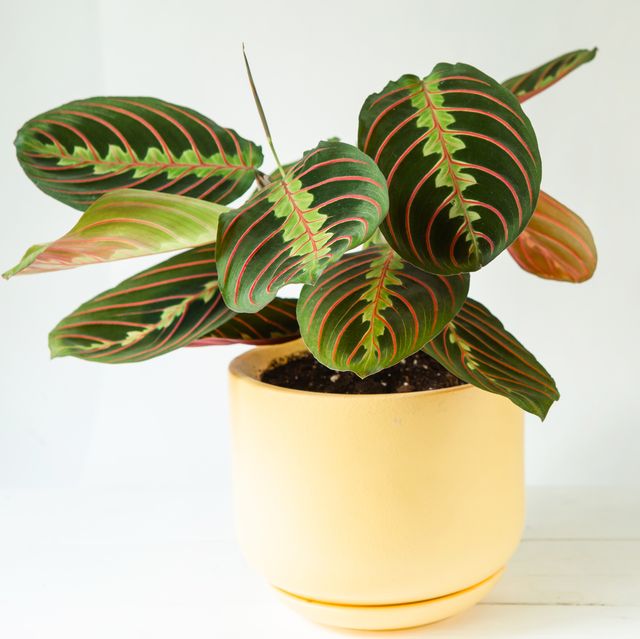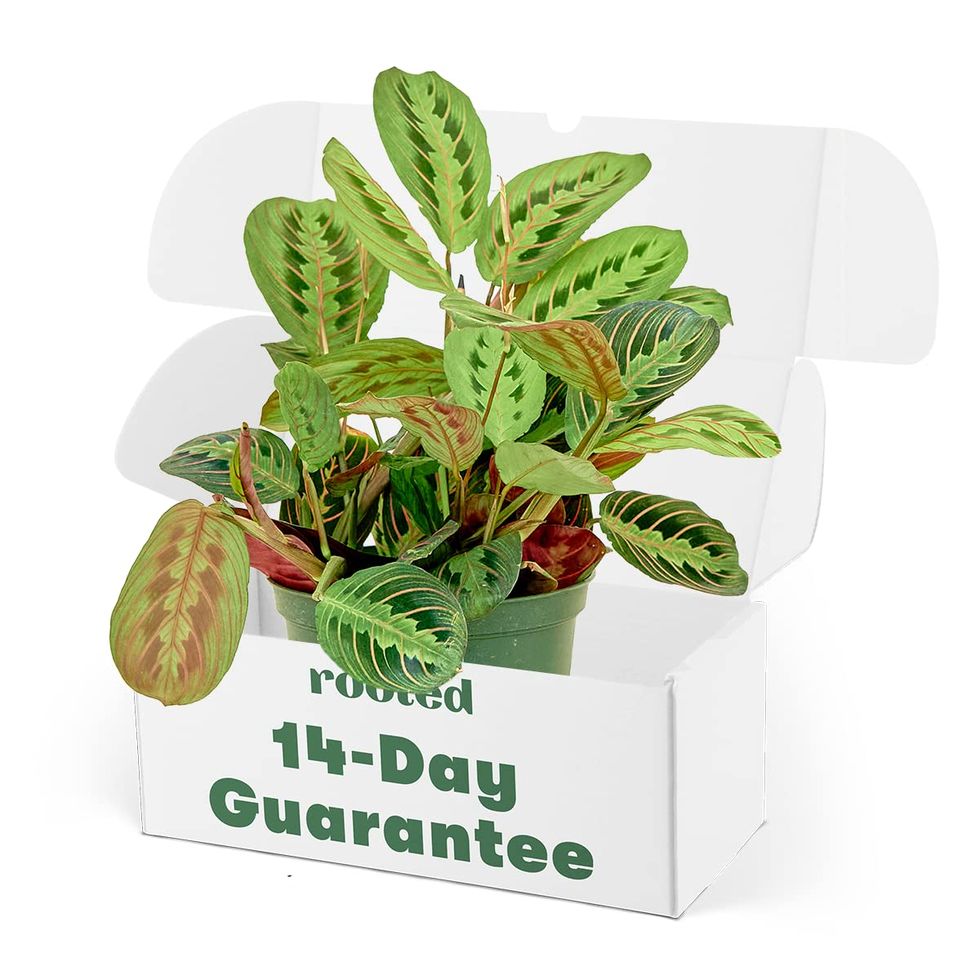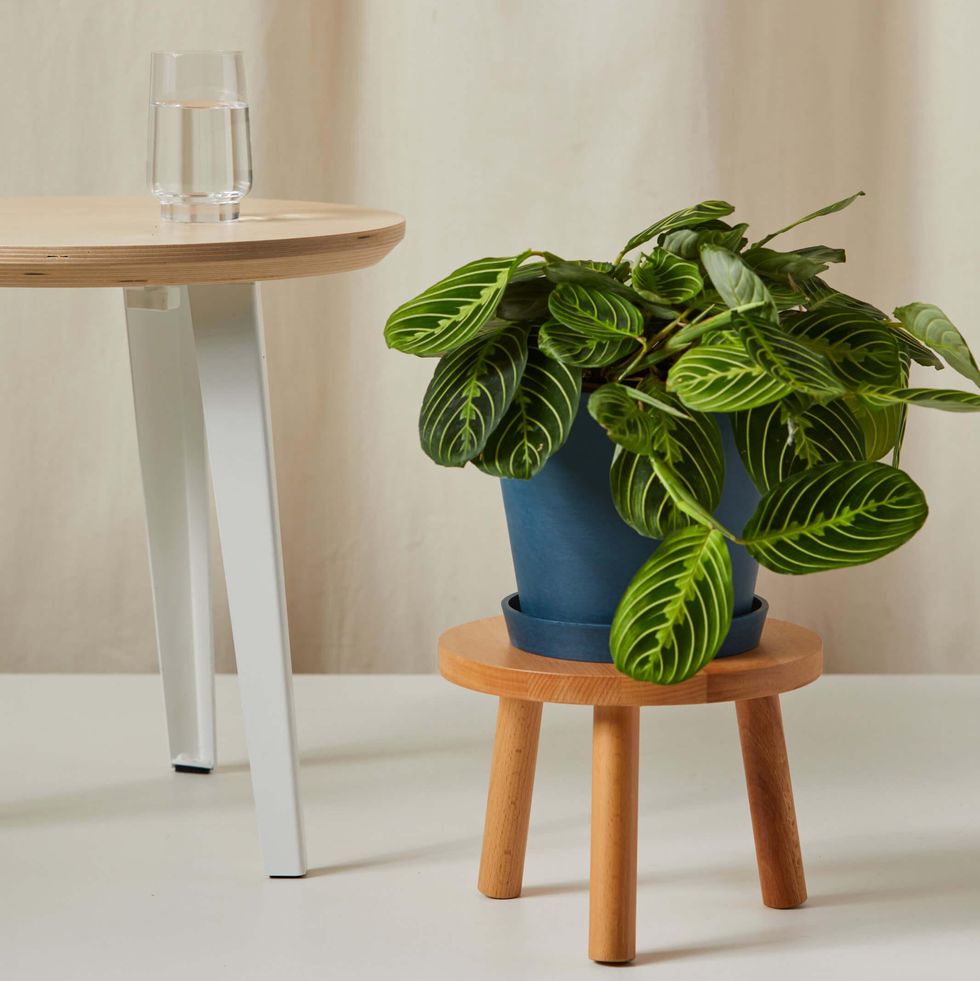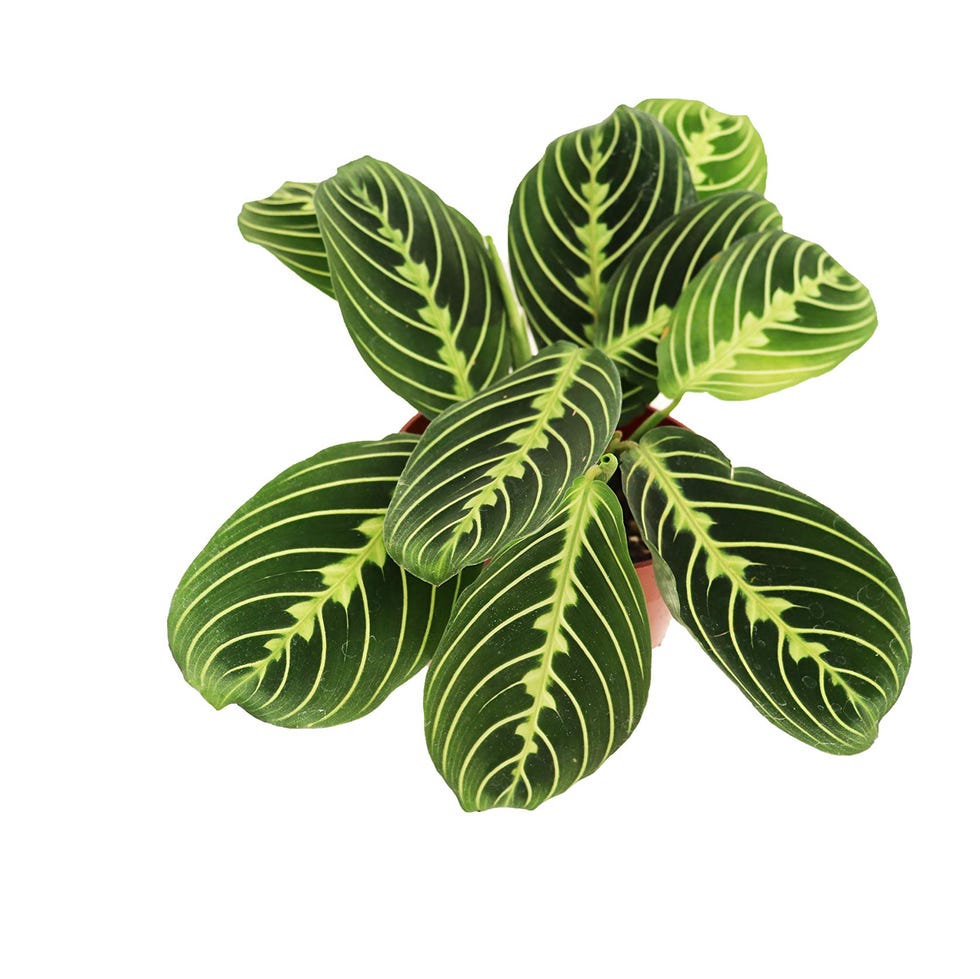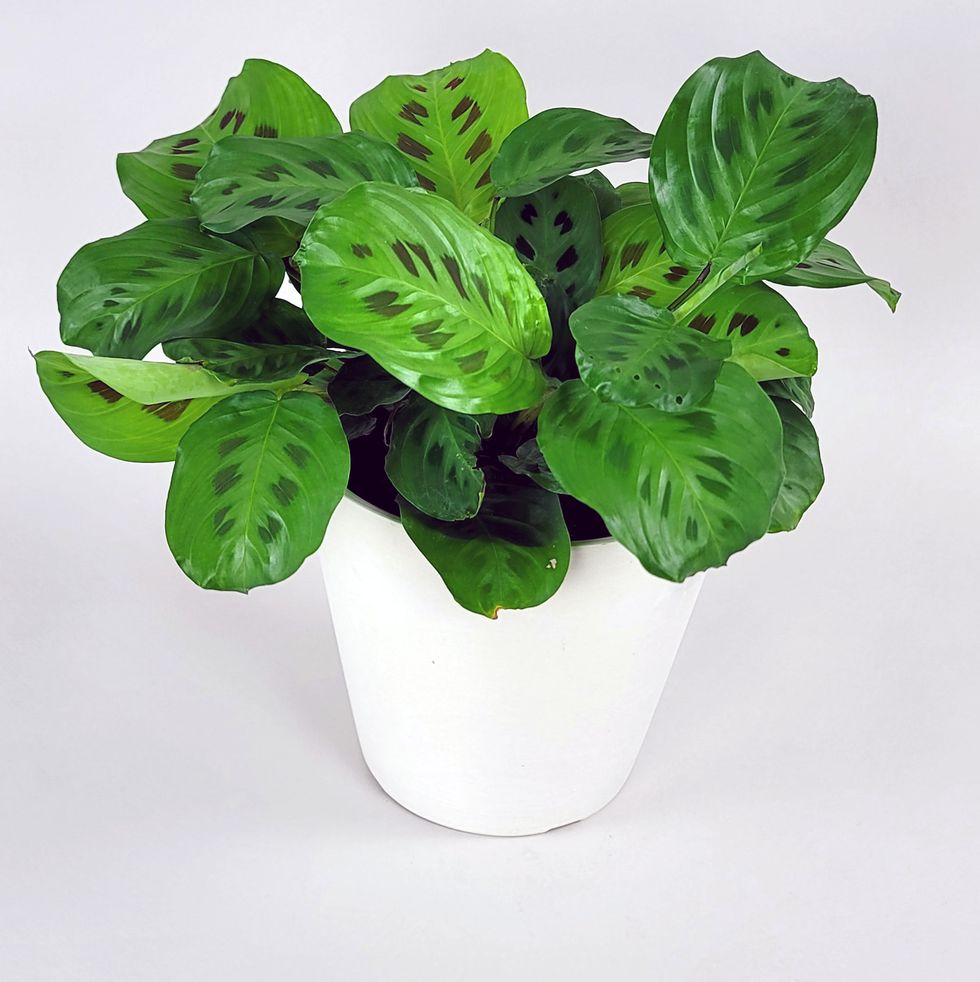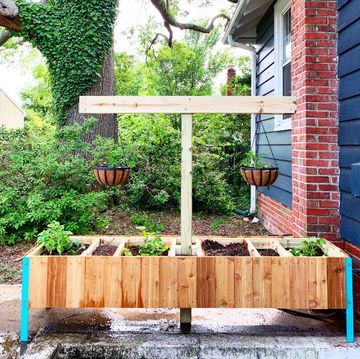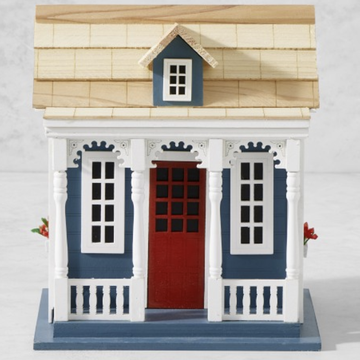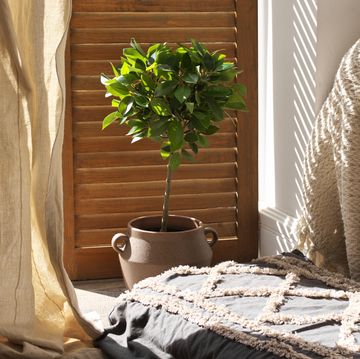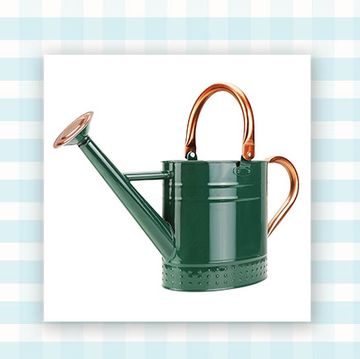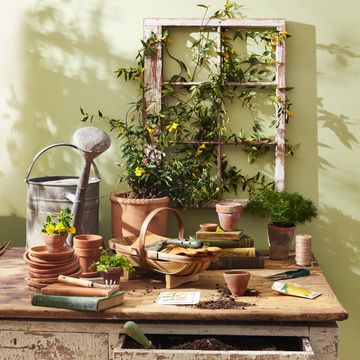Prayer plants are pretty-looking, low-maintenance houseplants that add a splash of color and style to any room.
Native to Brazil, this tropical plant makes a bright addition to your houseplant collection with prominent veining and eye-catching foliage. Varietals are available in shades of pale green, dark green and burgundy.
Prayer plants have a low-growing, clumping form that looks best in hanging baskets or when cascading out of pots over the edges of shelves or end tables. They're typically reasonably-priced, making them a great choice for adding color without spending too much.
Fun fact: Prayer plant gets its unique common name from the fact that the leaves fold up at night, as if in prayer.
There are several different types of prayer plants available. The ones you'll see most often include:
- Red prayer plant has dark green leaves with bright purple-red markings and prominent veining
- 'Lemon Lime' prayer plant has dark green leaves with chartreuse markings
- Green prayer plant has pretty green leaves with purplish splotches
How Do You Care for a Prayer Plant?
Prayer plants aren’t super-fussy, but they prefer bright, indirect light to thrive.
They’ll adapt fine to medium and low light levels, too, but they’ll grow a little more slowly. A south or east-facing window is best, or you can screen a hot west-facing window with a sheer curtain. Just make sure they’re not baking in direct sunlight, which will fade their glorious leaf colors.
If you don’t have good light, use an LED grow light.
Feed your plant with any all-purpose houseplant fertilizer a few times a year for the most vigorous growth. You also can ensure it stays tidy and clump-like if you trim prayer plant once or twice a year, unless you want it to have more of a hanging plant appearance. Simply cut off any gangly pieces that start to look leggy (see below how to root these pieces to make new plants).
How Do You Water a Prayer Plant?
Prayer plants like to stay lightly and consistently moist—not sopping wet. Touch the top of the soil before watering; if it doesn’t feel damp, give your plant a drink. Just make sure the pot has drain holes because no houseplant likes to have wet feet. The surest way to kill this plant is to keep it soaking wet.
Do Prayer Plants Bloom?
Sometimes, yes!
Although it’s not common for prayer plants to bloom indoors, it may occur in spring and summer. The white and pinkish-purple flowers on slender stalks are tiny, but they’re a sure sign your plant is happy and receiving ideal growing conditions!
Are Prayer Plants Toxic to Pets?
According to the ASPCA, prayer plants are not toxic to pets. However, any plant can cause GI distress if ingested in large enough quantities, so keep all houseplants away from pets if you have a nibbler.
28 Pet Friendly Plants You Can Grow Without Worry
How Do You Propagate a Prayer Plant?
There are several methods, but the easiest is to simply snip off a piece, making sure it has a few nodes, those tiny brown nubby things on base of the stems. Stick the cuttings in a glass of water, and place near a sunny window.
Change the water every week. Once the cutting forms roots in a few weeks, place the cutting in damp potting mix in a new pot. You can plant several cuttings in the same pot for a fuller appearance.
Arricca Elin SanSone has written about health and lifestyle topics for Prevention, Country Living, Woman's Day, and more. She’s passionate about gardening, baking, reading, and spending time with the people and dogs she loves.
